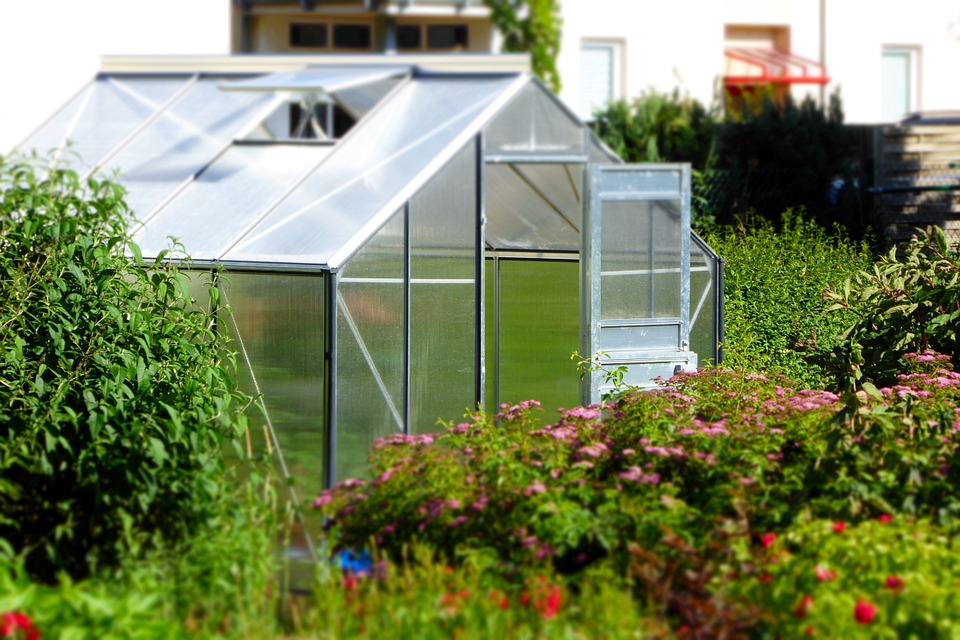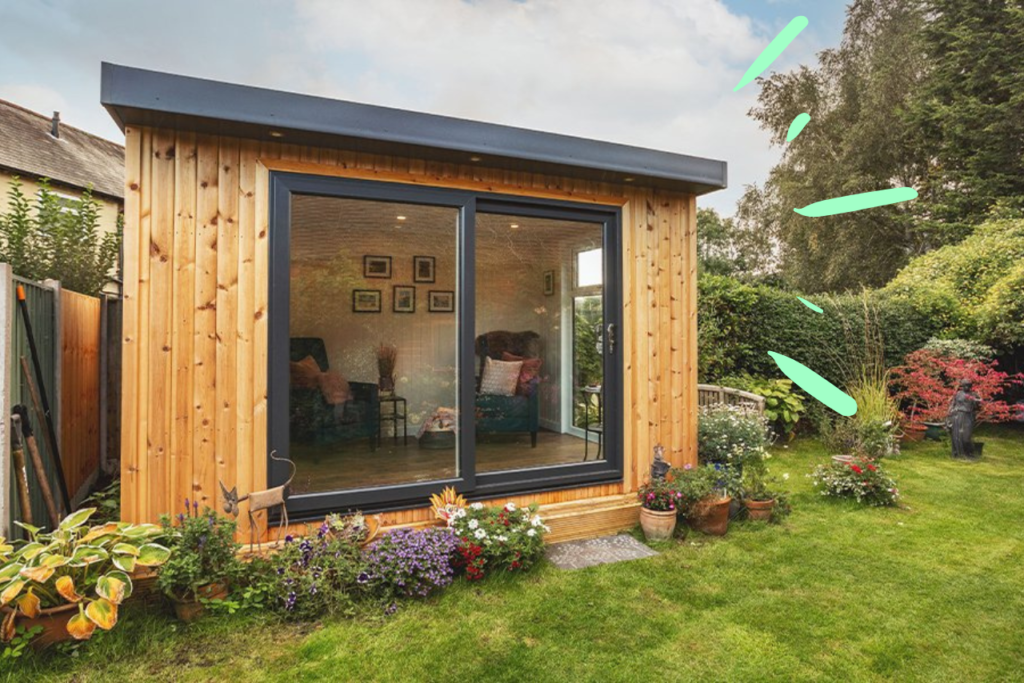Despite the complaints about bad backs from hastily assembled offices, an ironing board-cum-desk which keeps collapsing, and the temptation of doing chores instead of meeting deadlines ever present, it looks like the UK has taken to this working from home thing with open arms.
In fact, it’s been reported that two thirds of Brits are committed to homeworking for the long haul, viewing it as more than just a temporary crisis measure, and 39% still working from home, as of April 2023.
That said, it can be hard to eke out a permanent space for home working indoors, with floor-based real estate scant and distractions seemingly lurking behind every (fridge) door.
Time to fold away that ironing board, stand down that stack of books supporting your computer and get your home office in proper working order, don’t you think? Should you be planning to decamp to the garden and use your outdoor space to house a home office, then read on; here are 6 ideas for moving your home office into your garden.
Convert Your Greenhouse
For those with a taste for the unconventional, why not consider converting a greenhouse into an office space? Large glass windows provide ample exposure to sunlight, promoting creativity and well-being – essential for maintaining work rhythm, of course. Heat retention technologies and insulating materials can offer a comfortable workspace, irrespective of the weather.
To ensure the structure is not only functional but also comfortable and conducive to work, here are a few things you ought to bear in mind:
- Insulation and Temperature Control: A greenhouse is designed to be warm and to support plant growth. It can therefore get quite hot during the day and chilly at night, which is not conducive to a work environment. You may need to install proper insulation to regulate temperature more efficiently. Also, consider installing a heating and cooling system.
- Lighting: While a greenhouse does offer ample natural lighting during the day, you must ensure it’s not too glaring for computer screens. You may need to control the light with window treatments or shades. Also, consider artificial lighting for evening work or darker days.
- Ventilation: Fresh air flow is crucial in any office setup. Most greenhouses are well-ventilated, but ensure it is controlled, to avoid drafts or excessive cold.
- Privacy: With a greenhouse’s glass or plastic walls, privacy might be an issue. Consider installing blinds, curtains, or frosted glass in certain areas if more privacy is required.
- Office Furniture: Choose office furniture that complements the aesthetic of your greenhouse office. Consider using sustainable or weather-resistant materials.
- Noise Control: Greenhouses may not provide great acoustics or noise insulation. If your office requires peace and quiet, you may need to install noise-reducing materials.
And hey, if you keep a few tomato plants growing in your office, you’ve got yourself a tasty, nutritious snack just a reach away!

Consider A Shofice (Shed Office)
‘’Shoo! Leave me alone, we’re trying to get some work done here, go bother your brother!’’
Whilst a ‘shoofice’ certainly ticks a few boxes, the real term is ‘shofice’, and is an amalgamation of ‘shed’ and ‘office’. Anything for a tenuous segue, hey?
Converting existing or new sheds into garden office buildings is actually surprisingly easy. The primary considerations are lighting, electricity, heating and insulation, the latter two being essential during the UK’s long Winters.
Ideally, floor and table lamps are best suited to lighting a shofice, as the light will be changing regularly according to the whims and wants of Britain’s inclement weather; you can respond accordingly as such lamps are portable.
Speaking of portable, an electric radiator – portable and wall mounted – will likely do the job of heating your shofice, even in winter. Insulating the walls, ceiling and floor of your shed/office will go further in keeping the heat in, and will also prevent damp in the room.
You’re going to need an SWA cable installed, running from your property to the shed, in order to provide the shofice with that essential WiFi connection and charging sockets. It’s best to defer to a professional electrician on this one. If you are intent on going it alone here, check out Craftcamp’s office shed plans for a detailed overview of what to expect, measurement, material and size-wise.

Add A Garden Room
Garden rooms dedicated to being an office space can give #wfh a very different meaning this Spring and Summer. In doing so, you’ll create a devoted area which will enable you to focus on your work and deadlines with renewed vigour, and enable a little connection to nature in a time where our relationship with the outdoors has become rather fleeting.
We all know that maintaining productivity levels during this topsy turvy time has been near impossible, but erecting a space of privacy and function in the garden will enable you to get your professional life back on track.
Arguably, garden rooms are a more attractive addition to the garden than a shed. Indeed, they are not just sheds wearing a bit of makeup; turning a garden room into a home office is ideal for keeping living spaces separate from working areas.
As the guys at ukgardenbuildings.co.uk tell us, essentially garden rooms often look like small oak houses, with a more open front which can be filled entirely with glass windows, allowing for loads of natural light. And the good news? If your garden house is dedicated to home working (without a bed installed), then it won’t need separate planning permission.
Some people are concerned about security when it comes to garden rooms. However be assured that most are designed with similar windows and doors to the ones found in our homes using multi-point locking systems to make them secure. You can always fit an alarm system in your garden office for an added layer of security, too.
Repurpose Your Summer House
Flip things around; instead of creating a new space for your office, create a space for relaxing in your garden which can double up as an office when the house gets too busy. A summer house makes a fantastic addition to any garden with the space to take it; these buildings are extremely versatile and can be set up to suit any need, acting as a second dining room or living room and adding aesthetic intrigue to the garden, too.
Whilst the primary use of most summer houses is to promote relaxation and outdoor entertainment (hey, what better reason could there be?), these days they are used as everything from yoga spots to reading corners. Summer houses come in all different shapes and sizes and can be particularly pleasing on the eye depending on the style chosen, meaning they work well within the aesthetic of a stylish garden which has sections dedicated to defined purposes.
If investing in a summer house, add some comfortable furniture so you can unwind and read a book out front, or install a table and some chairs so your family can gather around for an evening of playing games and spending quality time with one another. With foreign holidays out of the question for now, this sounds like just the ticket!
There is a caveat; summer houses are really just fine weather buildings with a thin structure, and as such, they are only really good for summer use. So, this one is ideally suited for the casual home worker who wants to fire off a few emails whilst luxuriating in their garden space, but for a more permanent fixture, the aforementioned shofice or garden room might be a better bet.

The Possibility Of Garden Office Pods
An increasingly popular choice for home-workers, garden office pods blend style, practicality and sophistication. These self-contained units can be customised to mirror your specific requirements, creating your professional nook right amidst the flora and fauna of your garden. You can even go the extra green mile by incorporating eco-friendly materials or installing solar panels on the pod.
See New Potential In Your Orangery
Unlike the above, an orangery is connected to your home, much like a conservatory, and as such, is an excellent way to add a home office to domestic space – with wifi and electricity easily attached – whilst making use of the garden’s square-metres.
Orangeries are fantastic for maximising natural light, as similar to conservatories, the majority of the walls are windows. Though this flow of sunlight can be uplifting, there are downsides; if your work largely takes place on a computer, then the reflection of sunlight and its subsequent glare on your screen can be obstructive to getting work done.
Equally, in summer, these rooms can get hot and humid – an orangery is distinguished from a conservatory by its glass lantern roof, and was used in previous centuries as a greenhouse for fruit growing. This should indicate how sticky it can get in there!
Do bear this in mind if you plan to work from home in an orangery.
Looking for more interior (or exterior!) design ideas? Check out our article on here are 5 IDEAL ways to add some space to your home.





